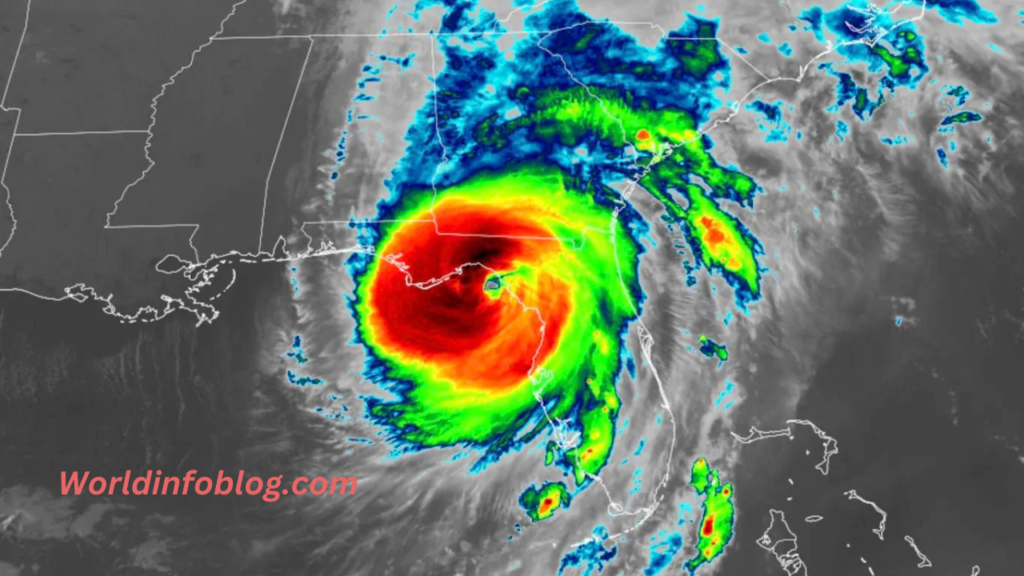Hurricane Helene was one of the largest and most destructive hurricanes ever recorded in the Southeast. This is due to its size and rapid intensity.
The Big Picture: As of Saturday morning, 44 people had died in Florida, Georgia and the Carolinas as a result the storm. AP reports. According to poweroutage.us, approximately 3 million people in Florida, Georgia, and the Carolinas were without electricity.
- Helene has had a large impact on a wide range of areas. It caused unprecedented flooding in Tampa.
- The hurricane spared Atlanta its strongest winds. However, the center of it made it to within 100 miles as a storm, and the majority of damage occurred in the east-southeast part of the city.
Zoom out:Now moving as a tropical depression through southeast Kentucky, Helene had maximum sustained winds of 35mph.
- As the storm moves slowly away, it is still possible to see hurricane force wind gusts in the southern Appalachians.
- Heavy rains and tropical rainfall from the hurricane combined with heavy rains in the days before the storm caused historic flooding across western North Carolina, South Carolina, and eastern Tennessee.
- Due to flooding, the Interstates in western North Carolina closed on Friday afternoon.
The National Weather service said the storm was “one of most significant weather events that have happened in western parts of the area since the modern era.”
- Asheville is included in this. area, where flooding at Biltmore of the Swannanoa River surpassed a previous record by five feet.
Hurricane Helene, on Thursday evening, became a fierce Category 4 major hurricane and made landfall in Big Bend Region of Florida. It began the day as a category 1 storm.
- The National Hurricane Center correctly predicted the rapid intensification. This was a significant advance for meteorology compared to just a few years ago.
A stunning fact:With winds of 140 mph, Helene is the strongest hurricane to ever land in the Big Bend. The peninsula curves around the panhandle.
- Images shared by users on social media revealed a massive storm surge that reached 15 feet above the ground, flooding small communities like Cedar Key, Fla.
Level of threat: The storm will continue to merge with a second storm system in the South and lose its tropical characteristics.
- On Friday, it produced more damaging winds and flooding rains in the northern Georgia Appalachians, as well as even more flood rains.
- The Atlanta metro area was issued a flash flood emergency, the NWS’s most severe type of flood alert.
An unprecedented list of flash flood emergencies , involving at least 12, was issued for Asheville in the western North Carolina and South Carolina.
- “A historic rainfall occasion is underway for the southern Appalachians and vicinity with sizable/domestically catastrophic flooding anticipated,” a NWS Greenville-Spartanburg forecast discussion said.
Context Helene’s intensification as it approaches the northern Gulf Coast in the context of climate change.
- Helene joins eight other U.S. landfalling hurricanes who have intensified rapidly by at least 35mph within 24 hours of landfall.
- In the period 1982-2016 there were only six storms that showed such an increase in intensity prior to a U.S. landing.
Climate change has caused a rapid intensification of storms and an increase in the intensification rate within the Atlantic Ocean Basin.
- Hurricanes are also producing more rain due to climate change than they did a few years ago.
- Loop current. Hurricane Helene was fueled by the heat of the waters of the Gulf of Mexico. The same ultra-warm current that fueled Hurricane Katrina was responsible for the supercharged storm.
The bottom-line:The damage wrought by hurricane Helene extends across at least ten states and will continue to increase on Friday night and into Saturday.
For More Information Visit Our Homepage:



